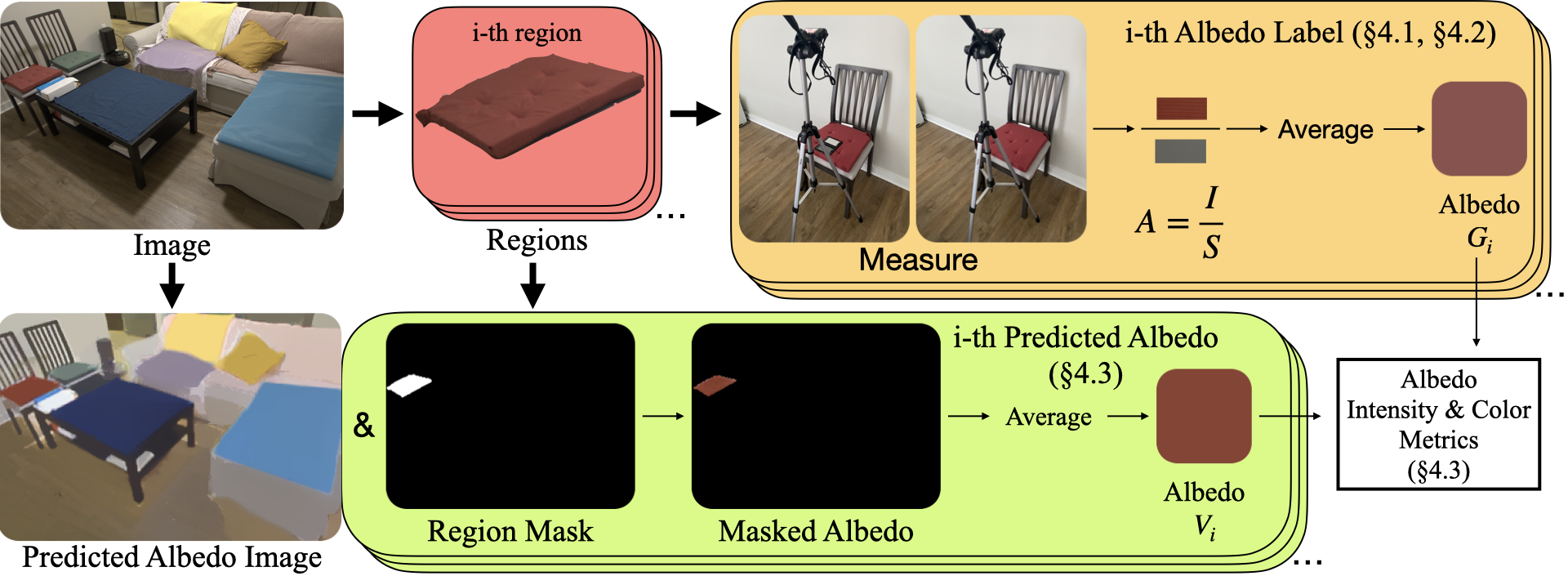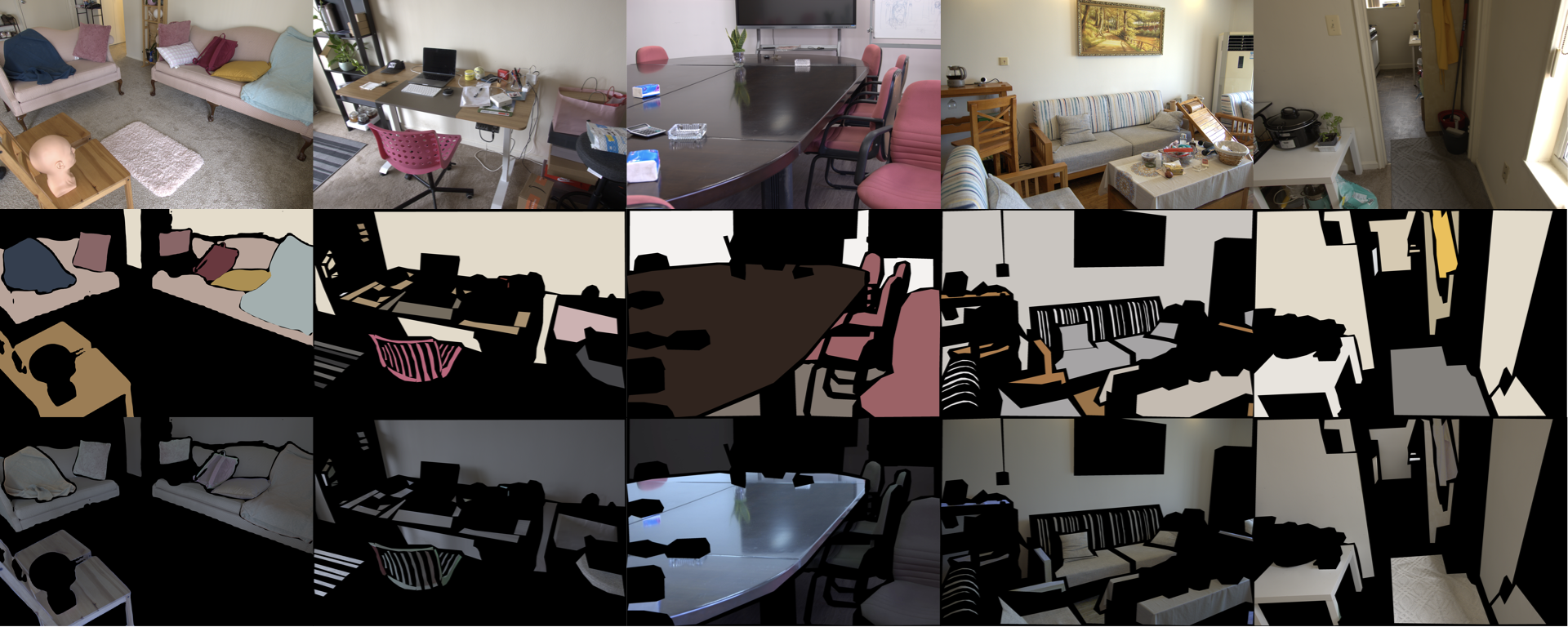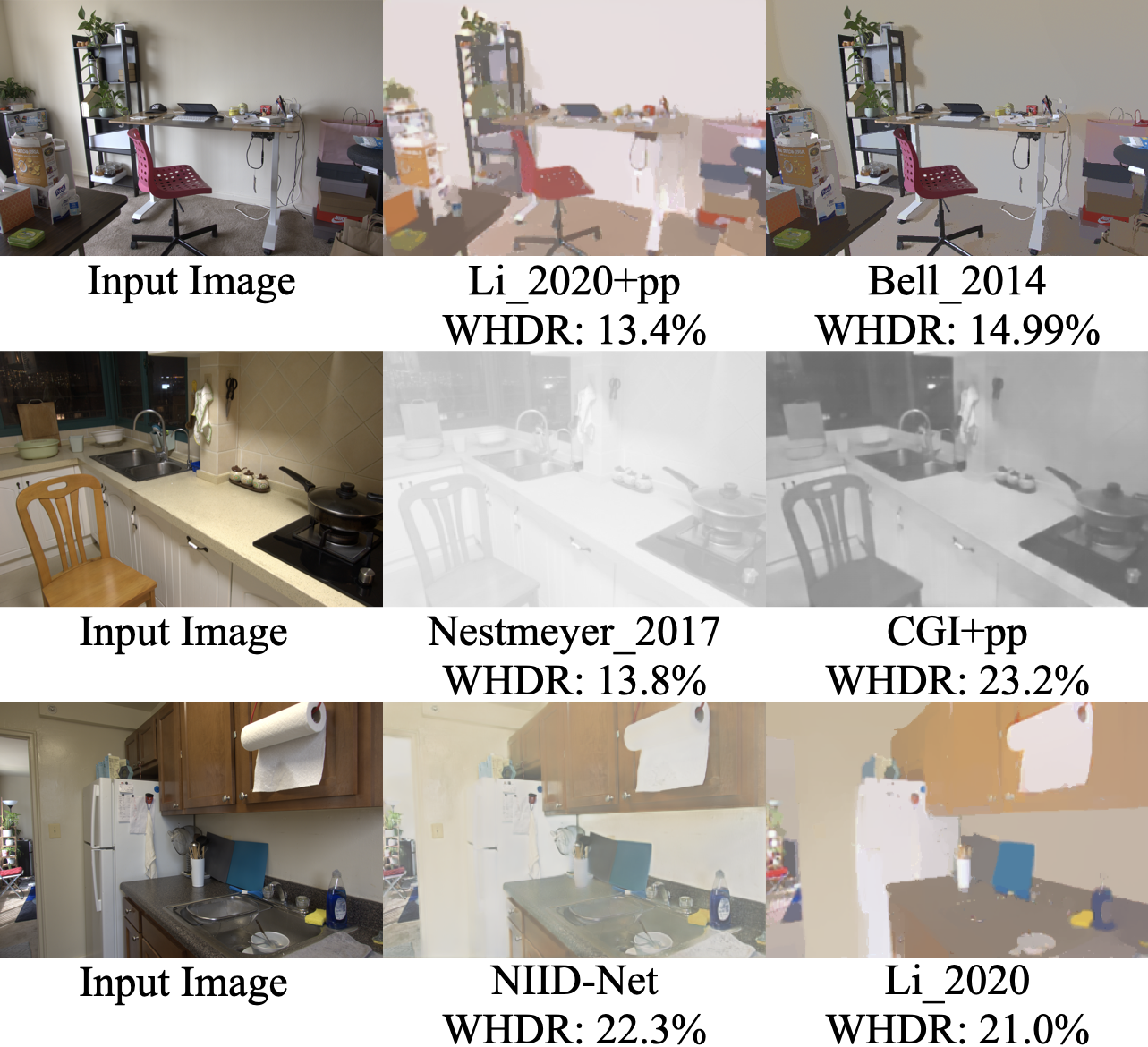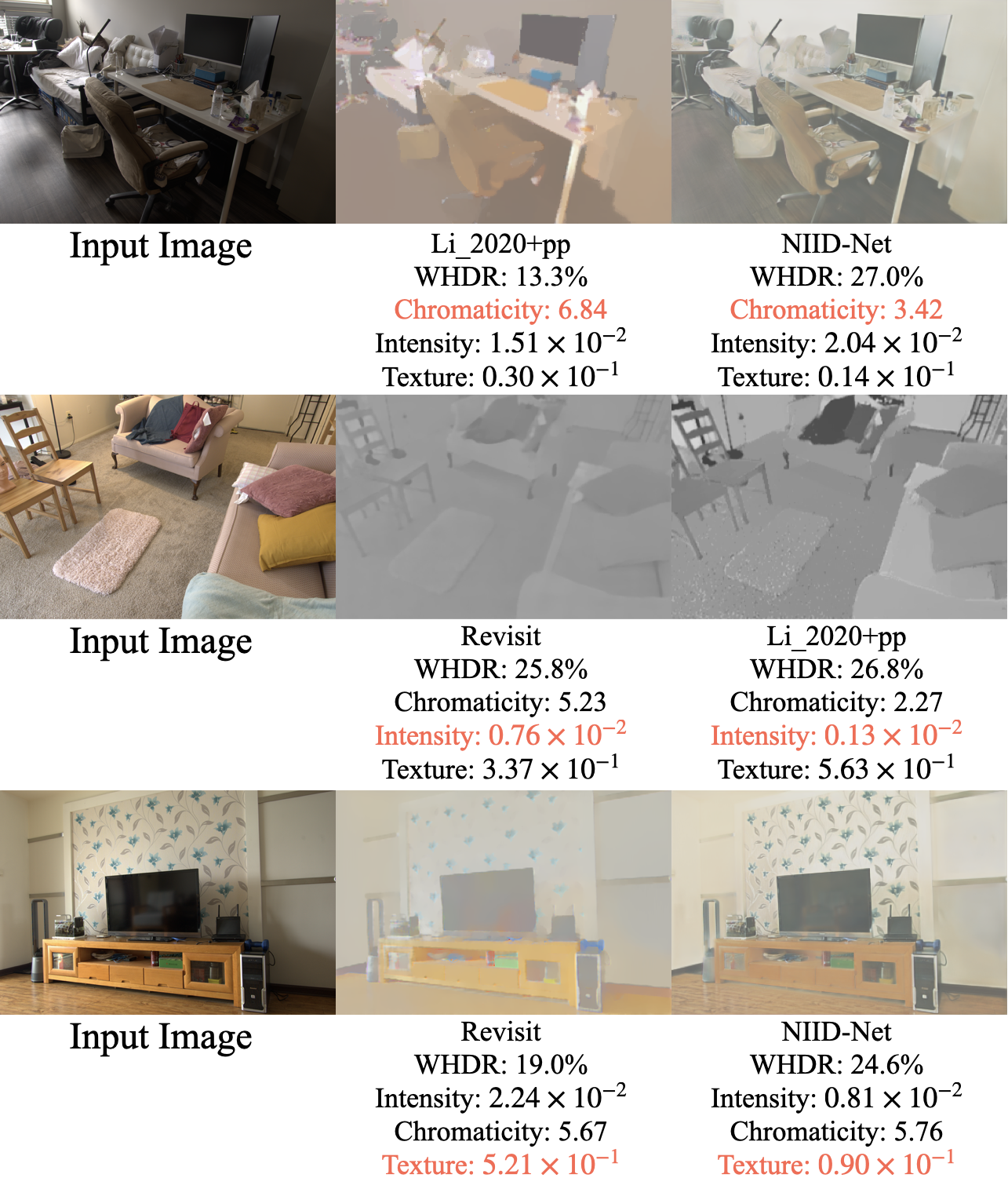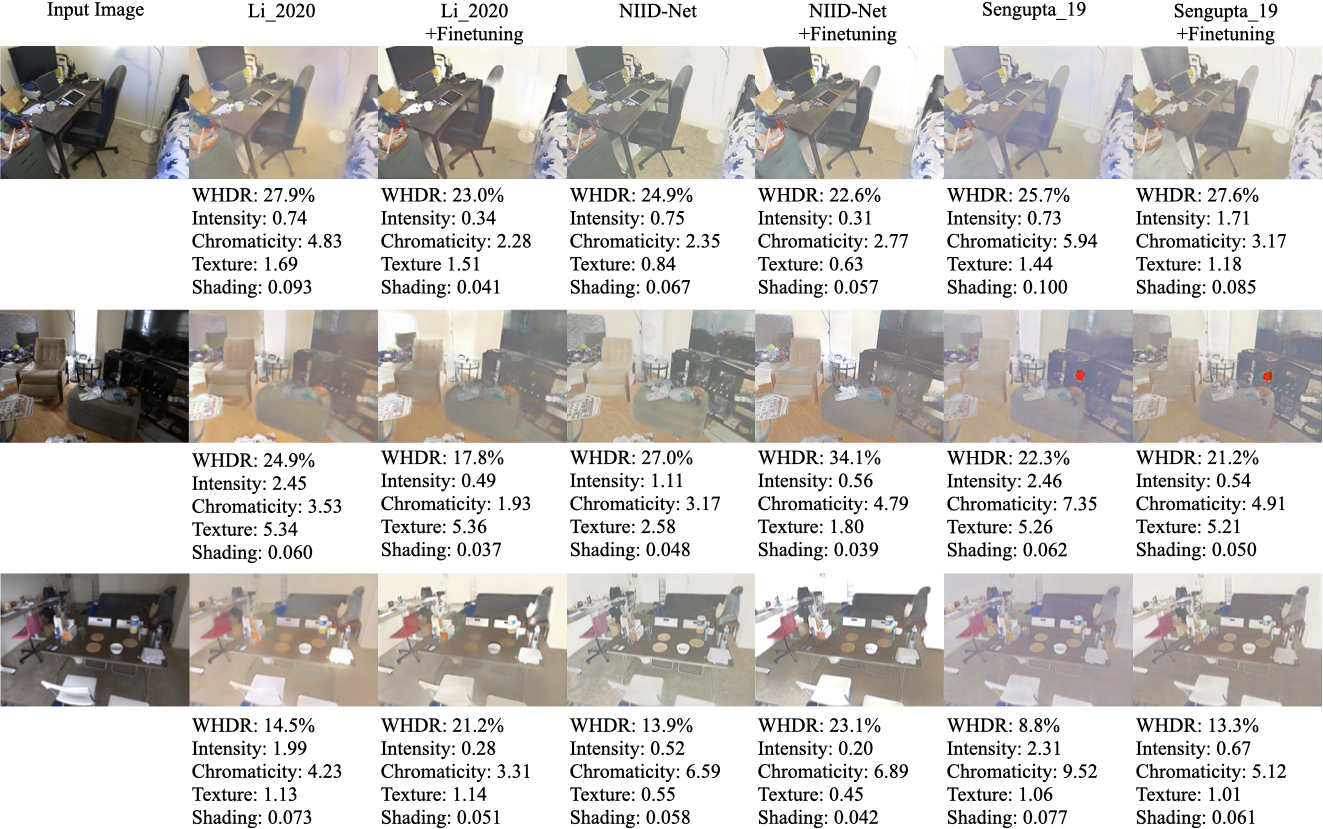Intrinsic image decomposition and inverse rendering are long-standing problems in computer vision. To evaluate albedo recovery, most algorithms report their quantitative performance with a mean Weighted Human Disagreement Rate (WHDR) metric on the IIW dataset. However, WHDR focuses only on relative albedo values and often fails to capture overall quality of the albedo. In order to comprehensively evaluate albedo, we collect a new dataset, Measured Albedo in the Wild (MAW), and propose three new metrics that complement WHDR: intensity, chromaticity and texture metrics. We show that existing algorithms often improve WHDR metric but perform poorly on other metrics.
We then finetune different algorithms on our MAW dataset to significantly improve the quality of the reconstructed albedo both quantitatively and qualitatively. Since the proposed intensity, chromaticity, and texture metrics and the WHDR are all complementary we further introduce a relative performance measure that captures average performance. By analysing existing algorithms we show that there is significant room for improvement. Our dataset and evaluation metrics will enable researchers to develop algorithms that improve albedo reconstruction.
